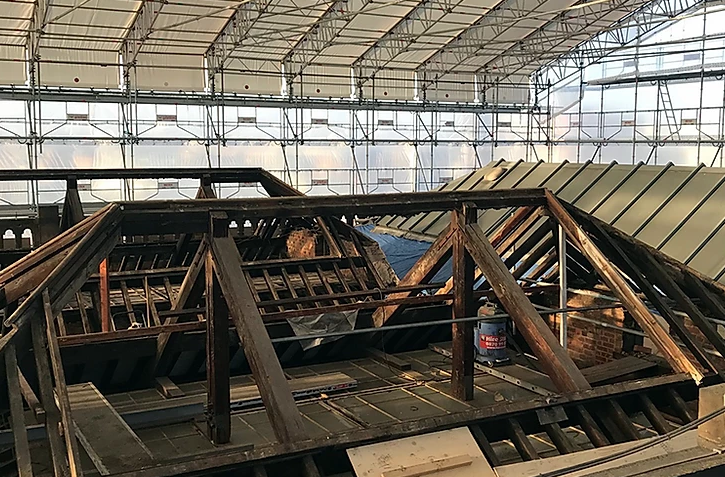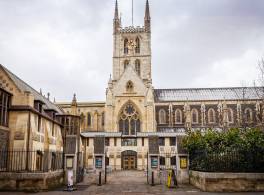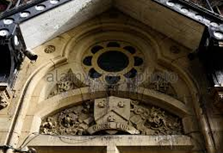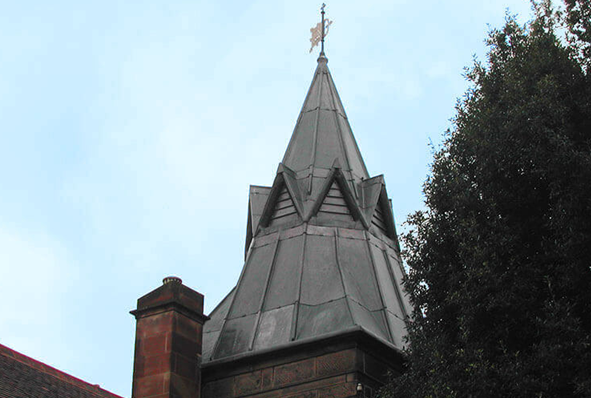Heritage Roofing
Heritage roofing - maintaining our iconic buildings
The UK is home to some of the most iconic buildings in the world, from stunning churches and cathedrals to historic stately homes. Each and every one of these remarkable feats of architecture requires regular maintenance to ensure they remain in the very best condition, allowing them to be enjoyed for generations.
Cathedral Care
Restoration and upkeep of cathedrals
There are some 42 Anglican cathedrals in the UK, not to mention 20 or so Catholic cathedrals. Cathedrals form the most important collection of historic buildings in England. The largest and most ancient are internationally famous, the smallest are usually among the most significant buildings in their region and even the most recent are architectural masterpieces.
Master Craftsmen
Championing our heritage with modern craftsmanship
Twenty years ago, English Heritage (now Historic England) published its first-ever Register of Buildings at Risk across England, which featured nearly 2,000 buildings and monuments that were ‘neglected, broken and unloved’. Recently Historic England was delighted to announce that over two-thirds of those buildings were now safe, in both urban and rural areas right across the country.
Lightning Protection
When lightning strikes are you protected against this act of God?
The issue of lightning protection in churches is one that has exercised this publication for many years. In this four-part series of spotlights on the issue we will be revisiting various aspects of the subject, beginning with an overview of current thinking.
Traditional Lime
Lime: it’s better for buildings – and for the environment
It is now fairly well known that cement is not good for old buildings and that lime mortar should be used. But why? What are the advantages and what are the disadvantages? In order to begin to answer those questions it is necessary to understand the nature of traditional building, the process by which buildings used to be built, and how it differs from modern construction, the process by which we build today.
Audio Visual
Audio visual equipment in church buildings
This guidance is issued by the Church Buildings Council under section 55(1)(d) of the Dioceses, Mission and Pastoral Measure 2007. As it is statutory guidance, it must be considered with great care. The standards of good practice set out in the guidance should not be departed from unless the departure is justified by reasons that are spelled out clearly, logically and convincingly.
Read More...
CRE Events
All change at CRE: the UK’s ‘ideal church show’
The Christian Resources Exhibition (CRE), the UK’s largest church-related show, has changed hands in its 40th year and has been taken over by Quartz Business Media.
Insurance
You need to ensure that reasonable precautions are in place at your church to keep it safe for those who use it. To do this, you need to think about what might cause harm to people.
You will then need to decide if the precautions already in place are adequate. If they are not, you may need to identify further action to prevent any danger. When done formally, this is known as a risk assessment.
LPOW Grants
£23 million government package to support restoration of thousands of listed places of worship
Heritage Minister Sir Chris Bryant has announced that the Listed Places of Worship Grant Scheme will be extended into the next financial year, providing £23 million so that thousands of historical buildings, including churches, synagogues, mosques and temples, can carry out restoration work.
Church Maintenance
Church maintenance and repair: Calendar of Care
Just as prevention is always better than cure, maintenance is preferable to major repairs. But, such repairs may not always be avoidable. Church Care offers a monthly guide in our coming issues Starting in Spring
We can help you understand the common problems and areas that need your special attention, and give you tips for regular maintenance schemes.
Pest Control
Michael Palin warns of pest threat to churches
Michael Palin is supporting the future of the UK’s historic churches and chapels with a voiceover for a new animated film. The 80 second animation, produced for the National Churches Trust, highlights why churches are some of the nation’s best loved buildings.
Town Halls
The history of the great Victorian Town Halls of Northern England
From industrial squalor to civic pride, the story behind some of the most impressive buildings of the North involve a unique mix of economics, grand designs and noble sentiments within communities.
Lead Roofing
Lead is one of the oldest materials in the roofing industry and is still commonly used throughout the world today.
Lead roofing is a traditional roofing method which has been used in the industry for hundreds of years, and is therefore proven to be extremely reliable. Lead roofing, and sand-cast lead, in particular is ideal for old buildings such as churches or historical renovations, whereas milled lead roofing is a mass-produced alternative, used for precision and accuracy in homes and commercial buildings alike.
SEARCH OUR DIRECTORY
Ecclesiastical and heritage venues come together for Disabled Access Day
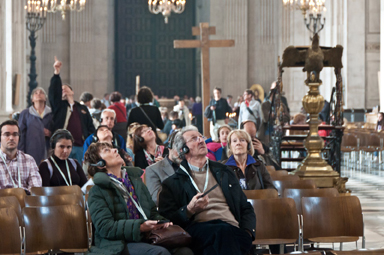 The first Disabled Access Day - a new initiative aimed at encouraging disabled people, their friends and families to access a visitor attraction - took place on 17 January. Over 200 companies and venues across the UK gave their support to the initiative, including VisitEngland, VisitScotland, Visit Wales, Standard Life, BT and the Museums Association.
The first Disabled Access Day - a new initiative aimed at encouraging disabled people, their friends and families to access a visitor attraction - took place on 17 January. Over 200 companies and venues across the UK gave their support to the initiative, including VisitEngland, VisitScotland, Visit Wales, Standard Life, BT and the Museums Association.
Lead Sheet Association Manual – updated 2015 edition available now
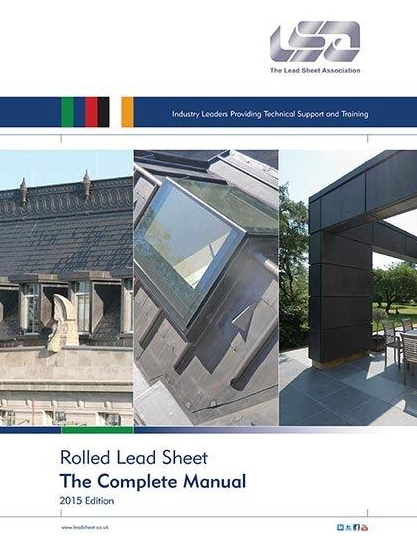 The LSA’s Rolled Lead Sheet Manual sets the technical standards for the industry and is the essential reference point for leadworkers, architects and specifiers.
The LSA’s Rolled Lead Sheet Manual sets the technical standards for the industry and is the essential reference point for leadworkers, architects and specifiers.
The newly updated version of both the e-Book and hard copy are now available to purchase.
Holy roof intact again thanks to Martin-Brooks
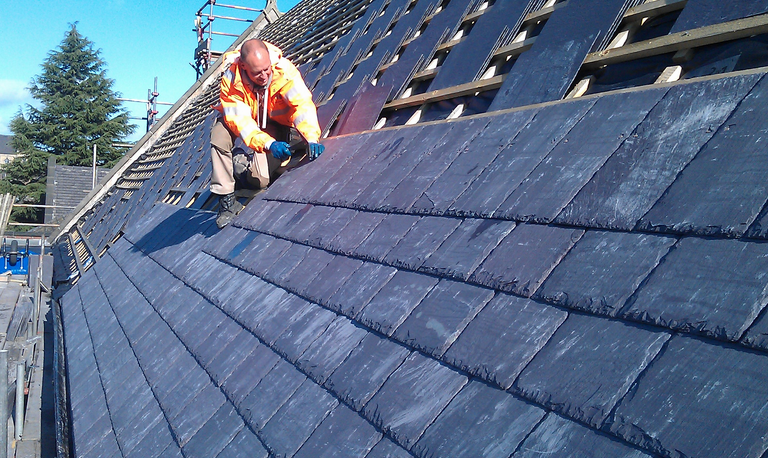 Heritage experts at Sheffield roofing specialists, Martin-Brooks, are putting the finishing touches to the latest renovation project to enhance their home city’s skyline.
Heritage experts at Sheffield roofing specialists, Martin-Brooks, are putting the finishing touches to the latest renovation project to enhance their home city’s skyline.
The firm is breathing new life into a tired roof at the grade II listed Saint Mary’s Church in Walkley, to improve conditions for all who gather there.
Buying the right folding chairs for your church
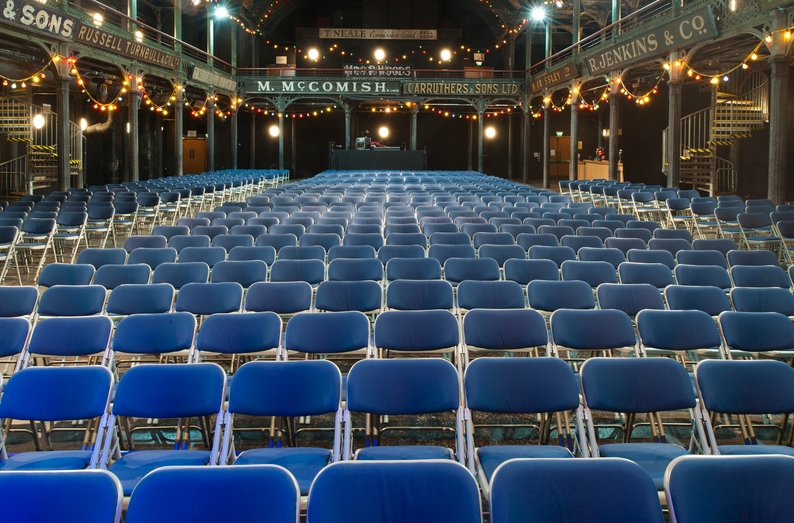 When buying folding chairs for your church, there are one or two things you need to take into account to ensure you make the best decision. After all, there are hundreds of options out there, and limitless uses to which the chairs can be put.
When buying folding chairs for your church, there are one or two things you need to take into account to ensure you make the best decision. After all, there are hundreds of options out there, and limitless uses to which the chairs can be put.
Length of Use
For example, there’s a marked difference between a chair that might be used for short meetings or coffee mornings, and one that is used for the duration of a church service. Length of use should be considered alongside the chair’s comfort and strength.
The only way is ISCEx: Sound & Communications show nears D-Day with a bang
 With little over a week to go before this year’s ISCEx2015, the Institute of Sound and Communications Engineers is reporting a record number of companies exhibiting.
With little over a week to go before this year’s ISCEx2015, the Institute of Sound and Communications Engineers is reporting a record number of companies exhibiting.
Working in partnership is key to success
 This was the key theme in Trevor Corser's introduction to the recent FTMRC statement. Trevor, managing director of JTC Roofing Contractors Ltd and at the time FTMRC chairman, said:
This was the key theme in Trevor Corser's introduction to the recent FTMRC statement. Trevor, managing director of JTC Roofing Contractors Ltd and at the time FTMRC chairman, said:
"Taking on the challenge of becoming FTMRC Chairman, a rapid realisation dawns (although I had always suspected it) that no matter how brilliant or dynamic the individual (I wouldn’t claim to be either), to be really effective there is a need to work in partnership with others.
Trace-in-Metal undertakes pilot installations at ten churches
 A revolutionary security system that protects lead roofs from metal thieves has completed a series of pilot installations at churches in Yorkshire and Lincolnshire. The work, by Trace-in-Metal, has been carried out to satisfy a rigorous “approved supplier” status for one of the country’s leading insurer of ecclesiastical buildings.
A revolutionary security system that protects lead roofs from metal thieves has completed a series of pilot installations at churches in Yorkshire and Lincolnshire. The work, by Trace-in-Metal, has been carried out to satisfy a rigorous “approved supplier” status for one of the country’s leading insurer of ecclesiastical buildings.
The Trace-in-Metal process sees thousands of microdots infused into lead sheets “marking” them with a unique identifying code.
Crompton Lamps help Leeds Minster reduce its carbon footprint
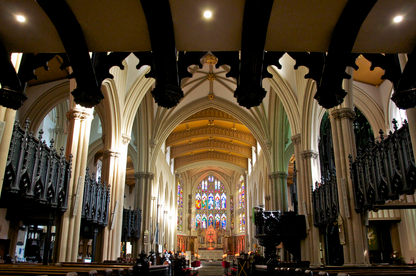 Leading lamp supplier Crompton, has donated a number of LEDs to the historical Leeds Minster as part of a campaign by the Church Council to significantly reduce its carbon footprint.
Leading lamp supplier Crompton, has donated a number of LEDs to the historical Leeds Minster as part of a campaign by the Church Council to significantly reduce its carbon footprint.
Previously known as the Parish Church of Saint Peter-at-Leeds, the building consists of a Gothic Revival design dating back to the 19th century and was granted Minster status in 2012.
The Minster has also been designated as a Grade I listed building by English Heritage.
St Peter’s Church, Winchester - a worthy lighting solution by Anthony J Smith (Glos) Ltd
 The Roman Catholic Church of St Peter in Winchester is a Grade Two-listed building dating from 1926. It was built in the Gothic revival style to replace a chapel built in 1792 by Dr John Milner, which is believed to have been the first Catholic church to be consecrated since the Reformation. Now known as Milner Hall, it acts as a church hall.
The Roman Catholic Church of St Peter in Winchester is a Grade Two-listed building dating from 1926. It was built in the Gothic revival style to replace a chapel built in 1792 by Dr John Milner, which is believed to have been the first Catholic church to be consecrated since the Reformation. Now known as Milner Hall, it acts as a church hall.
Wrought and Cast Iron Repairs at the Grade II listed Camellia House
 Situated in a walled garden within Wollaton Park, the 350 sq m Camellia House is a rare early example of a Georgian cast and wrought iron glass house.
Situated in a walled garden within Wollaton Park, the 350 sq m Camellia House is a rare early example of a Georgian cast and wrought iron glass house.
The council identified that the building was in need of intensive work following numerous incidents of vandalism, as well as the wear and tear of nearly two hundred years of British weather.
The restoration of the Croome Park 'Ice House'
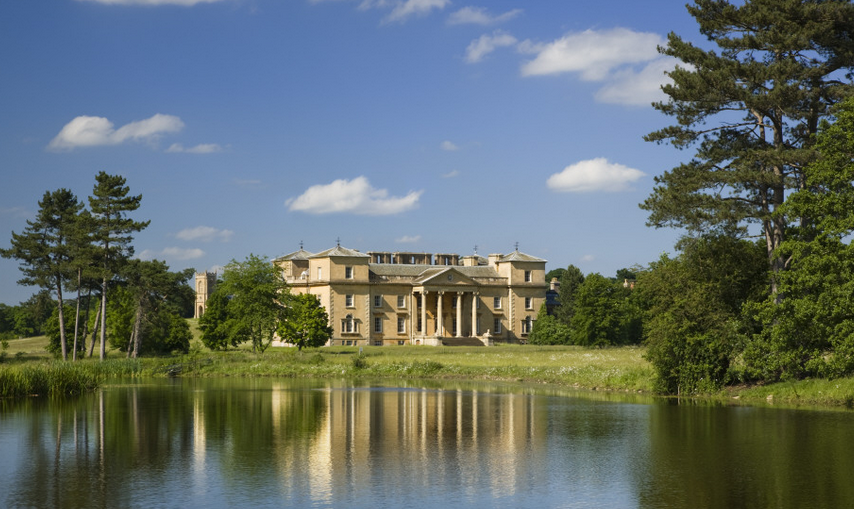 Ice Houses are unusual structures, often found in the grounds of stately homes. The practice of building Ice Houses came to England from France in the 17th century as a means of storing ice for use in the households of the gentry.
Ice Houses are unusual structures, often found in the grounds of stately homes. The practice of building Ice Houses came to England from France in the 17th century as a means of storing ice for use in the households of the gentry.
A fine example of an eighteen century ‘Ice House’ can be found at Croome, an 750 acre National Trust estate in Worcestershire, which is famous for the stately home Croome Court and its extensive grounds, which were Lancelot ‘Capability’ Brown’s first major landscape design.
A special audio installation for Totnes RC Church
 A leading church audio installer in the west-country, Kernow AV Installations, has recently completed an installation that required a few finishing touches that aren’t normally asked for by their ecclesiastical clients.
A leading church audio installer in the west-country, Kernow AV Installations, has recently completed an installation that required a few finishing touches that aren’t normally asked for by their ecclesiastical clients.
Kernow AV Installations has completed more than fifty installations in churches and chapels throughout Devon & Cornwall but this was the first time that they had been asked to re-paint the speakers.
Bespoke oak by Clearview Secondary Glazing
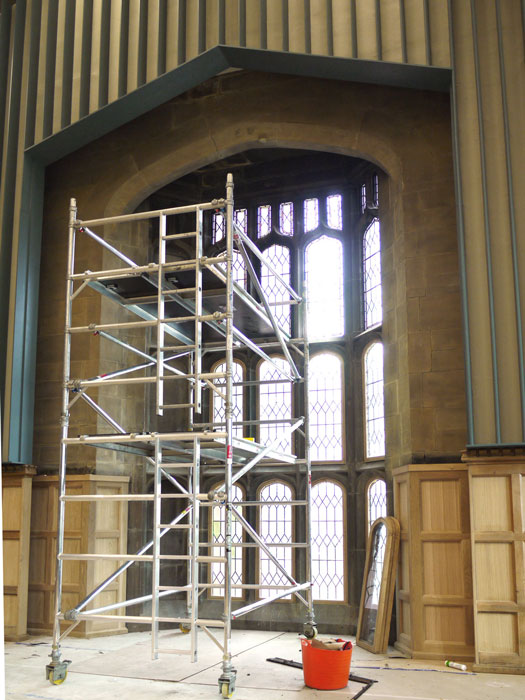 Clearview Secondary Glazing have just installed this bespoke made oak secondary glazing for Sheffield University’s landmark building Firth Hall.
Clearview Secondary Glazing have just installed this bespoke made oak secondary glazing for Sheffield University’s landmark building Firth Hall.
Named after Sheffield steel manufacturer Mark Firth, Firth Hall is a listed building with impressive period features and is a popular venue for civic functions, university events and weddings.
Roofing pavilion returns to Ecobuild
 The National Federation of Roofing Contractors (NFRC) will be returning to Ecobuild from 3rd – 5th March to host the Roofing Pavilion for the second year running.
The National Federation of Roofing Contractors (NFRC) will be returning to Ecobuild from 3rd – 5th March to host the Roofing Pavilion for the second year running.
Following the success of last year, the Pavilion has increased in size and will feature more of its Supplier Members (Manufacturers, Merchants and Service Providers). It will be supported by 22 companies surrounding an NFRC networking lounge.
Induction Loop Systems for churches

Since October 2004, Induction Loops have been mandatory in all public buildings - including Places of Worship. They are used to transmit clear sound, without the need for wires, to hearing aid users.
A correctly designed Induction Loop System produces a crystal clear sound through the whole of the seated area of the venue without the necessity for the user to take any action, apart from moving a switch on their hearing aid. Hearing Aid users can sit anywhere and hear perfectly without either background noise from other people or any other interference.
Partnership approach with English Heritage Access Audits for Listed Buildings
 Ian Street, MD of About Access explains how they work with old buildings and churches to promote access for all.
Ian Street, MD of About Access explains how they work with old buildings and churches to promote access for all.
Our work for English Heritage demonstrated our expertise in conducting audits of historic buildings – some of them more than 700 years old.
St Paul's marks Disabled Access Day with a series of tours and events
 People of all ages and with disabilities of any kind are being encouraged to visit St Paul's this January, as the Cathedral takes part in Disabled Access Day.
People of all ages and with disabilities of any kind are being encouraged to visit St Paul's this January, as the Cathedral takes part in Disabled Access Day.
On the first day of its kind in the UK, landmarks, venues and attractions, including St Paul's, put on special events and tours for children and adults throughout the day on Saturday 17 January.












